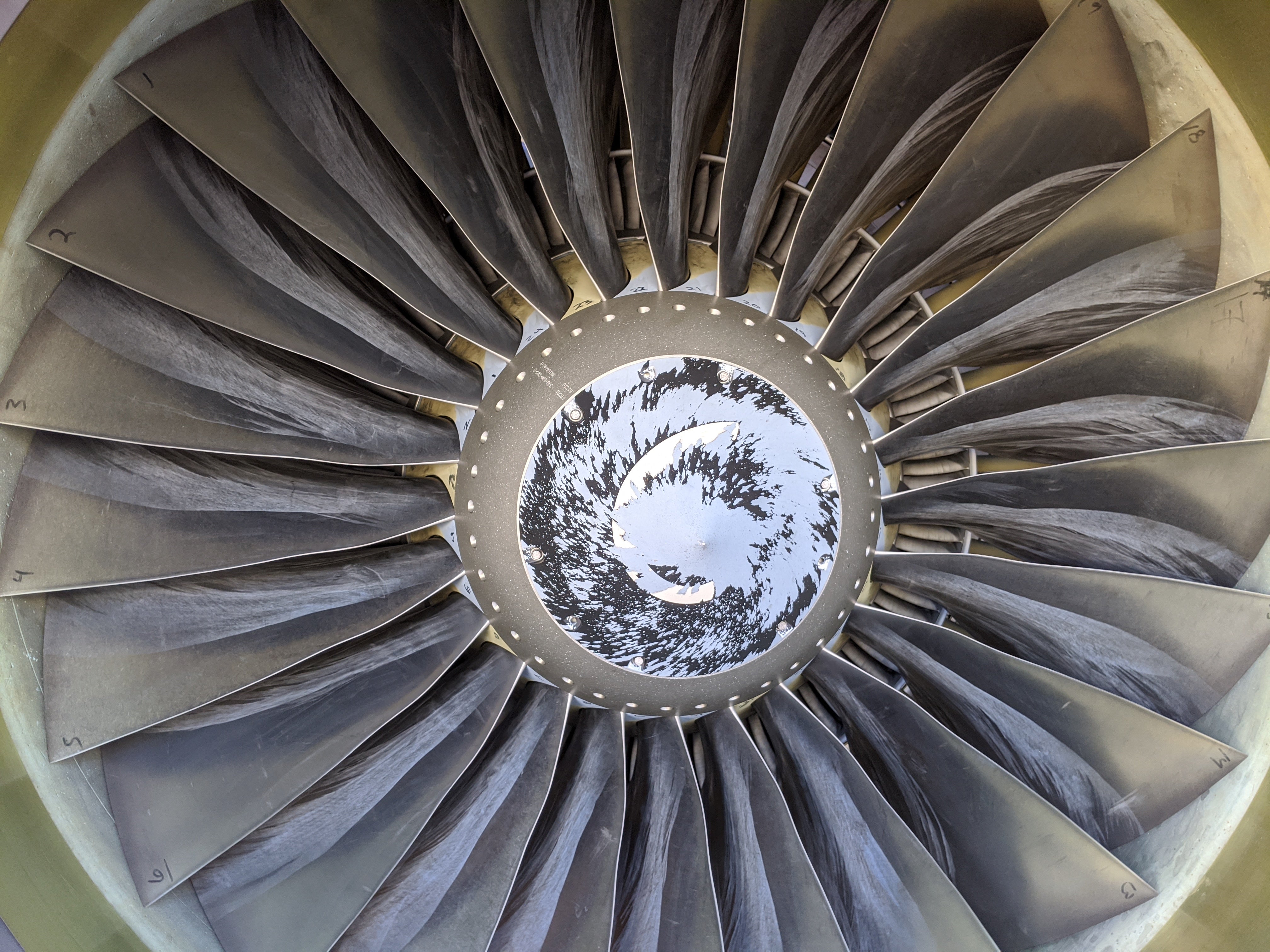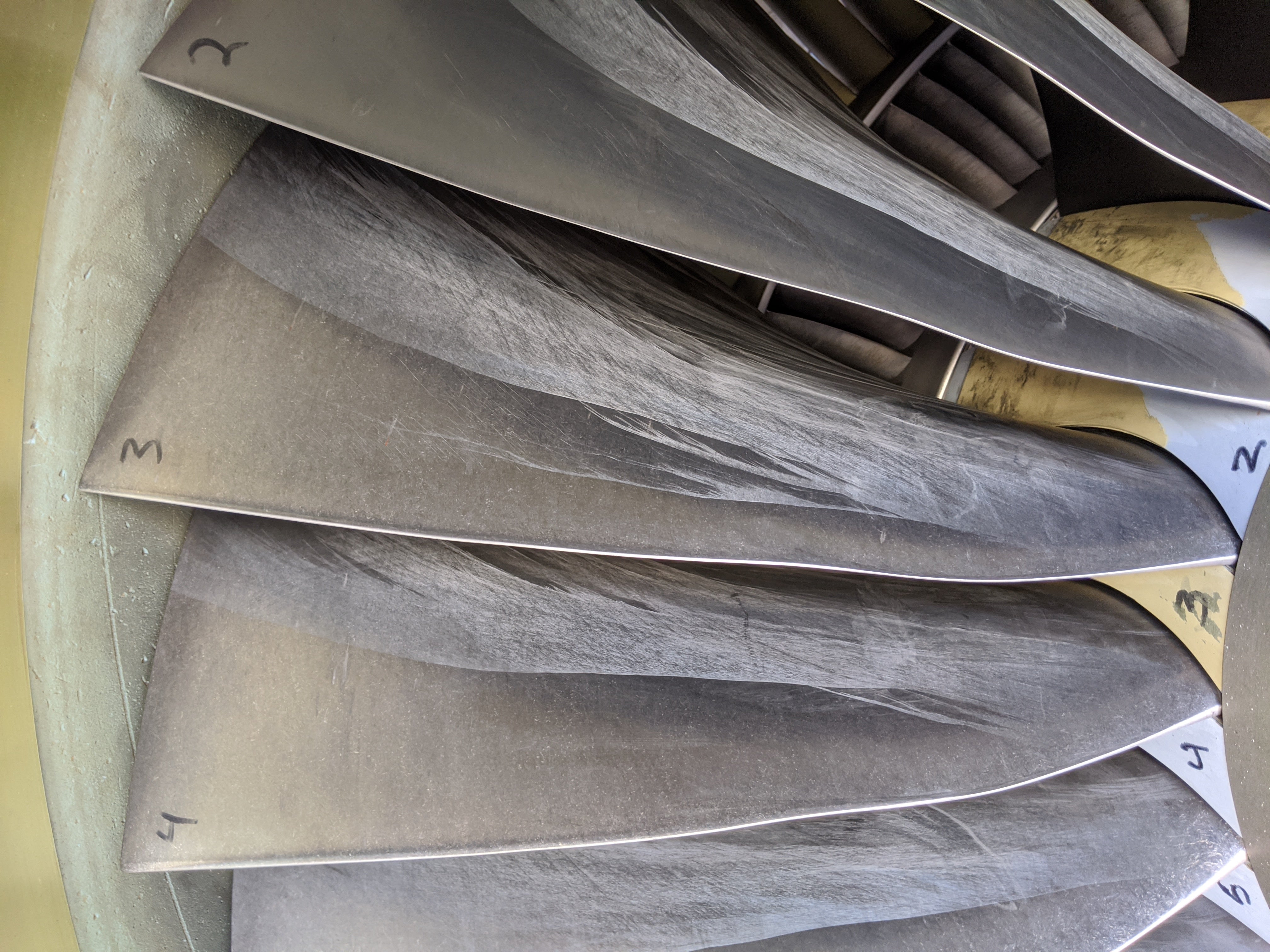 "Grindintosecond" (Grindintosecond)
"Grindintosecond" (Grindintosecond)
11/23/2019 at 22:20 ē Filed to: None
 9
9
 14
14
 "Grindintosecond" (Grindintosecond)
"Grindintosecond" (Grindintosecond)
11/23/2019 at 22:20 ē Filed to: None |  9 9
|  14 14 |

737 fan section. The bl ades slide individually into the hub and reside wi th a bit of a gap. As the de-ice and other seasonal crap fluids seep/fling out of a spinning hub, it dries quickly on the blade while at power. We see the pattern curve as it slides out , where not only itís at higher velocity, but the fan also starts to load up and carve the air for thrust. T he fluid changes direction from the air flow instead of just sliding out centrifugally. Patterns in physics are cool.

 ItalianJobR53 - now with added 'MERICA and unreliability
> Grindintosecond
ItalianJobR53 - now with added 'MERICA and unreliability
> Grindintosecond
11/23/2019 at 22:43 |
|
Bigly fans scare me for some reason....
 facw
> ItalianJobR53 - now with added 'MERICA and unreliability
facw
> ItalianJobR53 - now with added 'MERICA and unreliability
11/23/2019 at 23:25 |
|
The new GE9X engines for the 777X are larger diameter than a 737 fuselage:

They are big, hereís one mounted on a 747 for testing:

Donít worry though, even small intake fans are dangerous:

(he managed to get wedged in the intake and survived)
 BaconSandwich is tasty.
> Grindintosecond
BaconSandwich is tasty.
> Grindintosecond
11/23/2019 at 23:35 |
|
Does long term exposure to de-icing fluids eventually damage the blades?
 Grindintosecond
> BaconSandwich is tasty.
Grindintosecond
> BaconSandwich is tasty.
11/23/2019 at 23:47 |
|
Not so mucj. I ts not sprayed in there as it runs. Itís sort of picked up from the environment like paint overspray and such. Like your car just gets dirty from being around.
 ttyymmnn
> facw
ttyymmnn
> facw
11/23/2019 at 23:59 |
|
https://oppositelock.kinja.com/the-largest-jet-engine-in-de-vooorld-1820987446
 ttyymmnn
> Grindintosecond
ttyymmnn
> Grindintosecond
11/23/2019 at 23:59 |
|
This is good Oppo.
 BaconSandwich is tasty.
> Grindintosecond
BaconSandwich is tasty.
> Grindintosecond
11/24/2019 at 00:08 |
|
I remember reading a book in elementary school about how jet engines were made. I always thought it was neat how the splines on the base of each blade hook together.
 Grindintosecond
> ttyymmnn
Grindintosecond
> ttyymmnn
11/24/2019 at 01:07 |
|
Wait till I discuss SFC calculations and the ridiculous consumption of Russian afterburners.
 ItalianJobR53 - now with added 'MERICA and unreliability
> facw
ItalianJobR53 - now with added 'MERICA and unreliability
> facw
11/24/2019 at 01:21 |
|

 ttyymmnn
> Grindintosecond
ttyymmnn
> Grindintosecond
11/24/2019 at 07:14 |
|
Bring it.
 Grindintosecond
> ttyymmnn
Grindintosecond
> ttyymmnn
11/24/2019 at 10:21 |
|
I can't remember if your in ATL...
 ttyymmnn
> Grindintosecond
ttyymmnn
> Grindintosecond
11/24/2019 at 13:34 |
|
AUS
 Grindintosecond
> ttyymmnn
Grindintosecond
> ttyymmnn
11/24/2019 at 13:46 |
|
Gotcha. Will notify when there a while
 ttyymmnn
> Grindintosecond
ttyymmnn
> Grindintosecond
11/24/2019 at 13:58 |
|
Excellent!